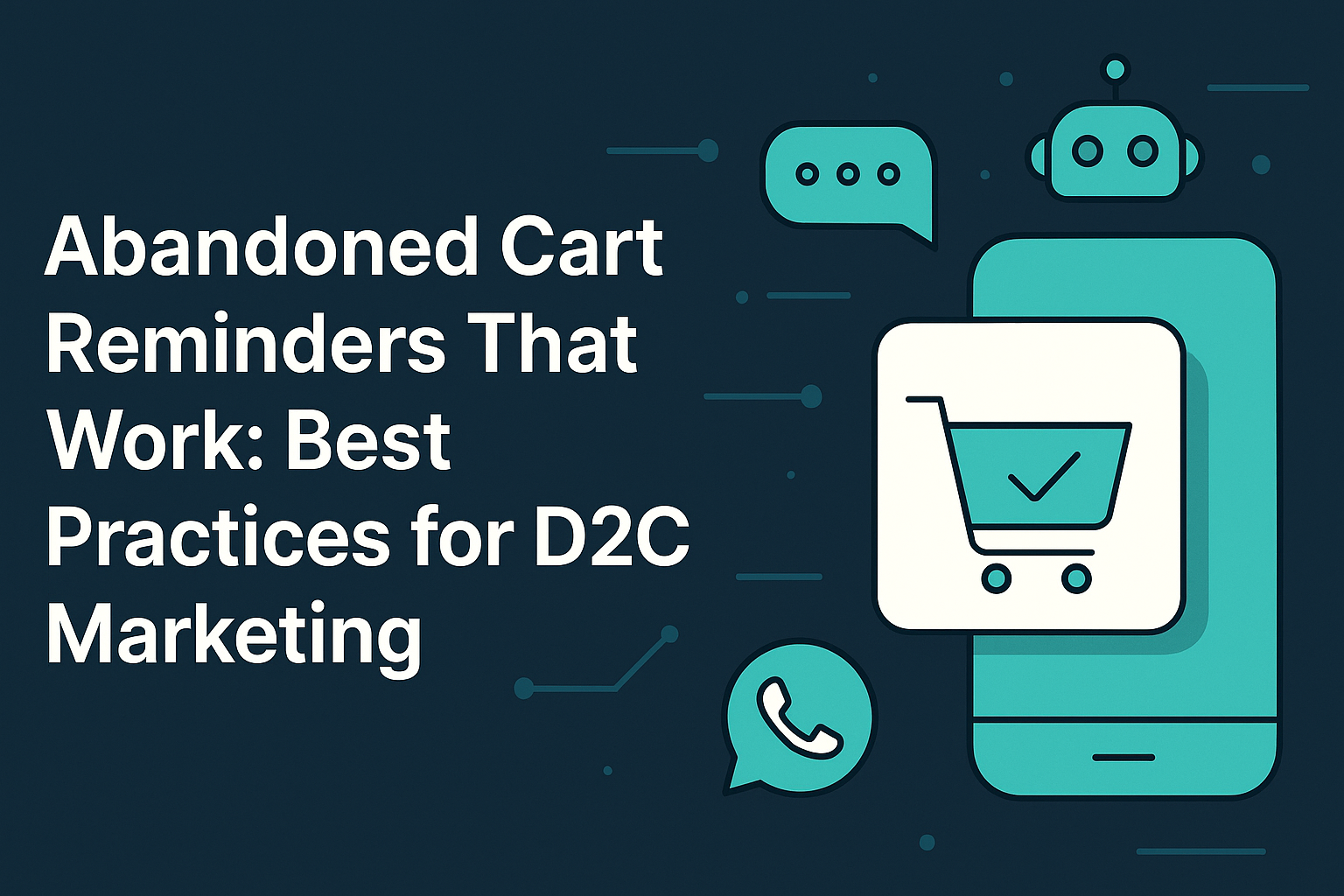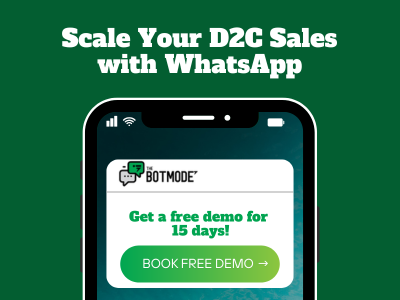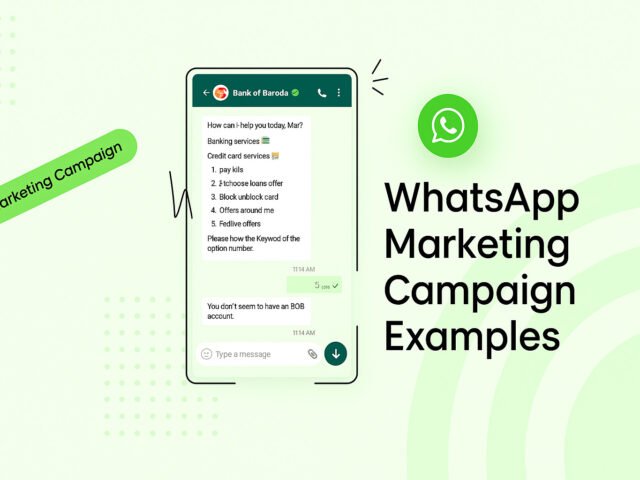Introduction
Every D2C brand faces it: potential customers fill their carts… then leave. These abandoned carts represent huge opportunity costs—but also big chances. An effective abandoned cart reminder strategy can convert a large chunk of that lost revenue.
In this article, you’ll find best practices for abandoned cart reminders that work. We’ll cover:
- Why are carts abandoned
- The channels & timing that convert (especially WhatsApp cart recovery)
- How to personalize and use incentives & urgency
- How to measure success & avoid common mistakes
If you want, after reading this, you can also explore how TheBotMode helps with abandoned cart recovery.
Why Carts Get Abandoned (So Your Reminders Hit the Right Pain Points)
Understanding why people abandon carts is crucial to crafting reminders that resonate. Some of the top reasons are:
- Extra costs (shipping, taxes, fees) surprise users late in checkout.
- Complicated or long checkout process (many steps, required account creation).
- Trust & security concerns: lack of clarity about payment, returns, or site safety.
- Mobile friction: mobile UX issues, slow load times or poorly optimized form fields.
- Decision fatigue, distraction, or comparison shopping. Sometimes people leave to think, compare, or just get interrupted.
Some stats to keep in mind:
- The average cart abandonment rate across industries is ~ 69‑70%.
- On mobile, abandonment rates can soar above 85%.
- Over 40% of abandoned cart emails are opened; of those, about 21% get clicked; and of those clicks, ~50% convert to purchase.
These numbers show two things: the scale of the problem and the real potential of good recovery/reminder strategies.
Best Practices for Abandoned Cart Reminders
Here are proven best practices D2C brands should adopt to make reminders effective.
Timing & Frequency
- Send the first reminder relatively soon after cart abandonment—ideally within 1–2 hours post‑abandonment. This is when intent is still fresh.
- Follow up with second and even third reminders: maybe 12–24 hours later, and again 24‑48 hours later if needed. But don’t overdo it.
- Use behavior‑based timing: e.g. delay differently depending on cart value, returning vs new customer.
Channel Mix: Email, SMS, Push & WhatsApp
- Email is the baseline. It gives space for visuals, longer copy, reminders of what’s abandoned. But it may get buried.
- SMS / Push for more immediate nudges. These are good for short, urgent messages.
- WhatsApp cart recovery is rising fast. Because WhatsApp messages have high open/engagement rates, rich media capabilities, conversational tone and trust, it often outperforms email or SMS in some markets. Use WhatsApp especially where your customers are likely to use it frequently.
Personalization & Content
- Show exactly what item(s) were abandoned: product image, variant (size/color), quantity, price. The more recognizable, the better.
- Use the customer’s name and past behavior if available. For example: “Hey [Name], you left behind [Product]—we held it for you.”
- If the product is in limited stock, mention that. If item has reviews, mention a good review or customer testimonial.
- Suggest similar items or cross‑sells sparingly, if the abandoned items are unavailable or the customer might like alternatives.
Incentives & Urgency
- Use incentives (discounts, free shipping, bonus) selectively—especially for high cart value or repeated abandonment.
- Urgency helps: limited‑time offers, “only a few left”, or deadlines. But ensure such urgency is real—don’t overpromise or overuse.
- Sometimes non‑monetary incentives work: e.g., fast shipping, secure payment assurances, and easy returns.
Clear CTAs & Trust Factors
- Single, clear call to action (“Complete Your Purchase”, “Return to Your Cart”, etc.) with direct link back to the cart. Avoid making the customer search for their cart.
- Show trust badges (secure payment, SSL, return policy) so the customer feels safe to proceed.
- Highlight policies (returns, refunds), and customer support if needed (“Have questions? Contact us”).
Design & Mobile Optimization
- Ensure reminders display correctly on mobile: image sizes, button sizes, font legibility.
- Lightweight emails or messages (fast load times, optimized images).
- Simplified checkout flows: guest checkout option, fewer form fields, progress bars, etc.
WhatsApp‑Specific Tips for Cart Recovery
Since this channel is becoming indispensable, here are some deep‑dive best practices for WhatsApp cart recovery:
- Obtain clear opt‑in: Users must have opted in to receive WhatsApp messages. Respect privacy and regulations.
- Automate but maintain a conversational tone: Use WhatsApp Business / Business API or partner tools to trigger messages automatically when a cart is abandoned. But keep the tone friendly, human.
- Rich content & quick reply options: Use images of the abandoned product, direct links back to the cart, maybe even a carousel of items if multiple. Buttons for reply or checkout simplify action.
- Timing: As with other channels, the first WhatsApp message should come fairly quickly, often within 1 hour. Then follow‑ups can be scheduled, but avoid too many reminders.
- Urgency & social proof: Use messages like “Only 2 left in stock” or reviews (“Rated 4.8 by hundreds of customers”) to reinforce value.
- Integration with other channels: Don’t rely only on WhatsApp. Combine it with emails or SMS in a multi‑touchflow. For example, email first reminder, WhatsApp second, etc.
- Templates & personalization: Use templates, but incorporate dynamic elements: customer name, product name, image, price.
- Monitoring & respecting user response: If the user indicates disinterest, stop reminders. Also, respect WhatsApp’s policies to avoid spam or being blocked.
Tracking, Measuring & A/B Testing
To ensure your abandoned cart reminders keep improving, you need to track and test:
- Metrics to track:
- Abandoned cart recovery rate (how many carts recovered vs abandoned)
- Open rate of reminders (emails, WhatsApp, SMS)
- Click‑through rate (i.e., how many reminders lead the user back to the cart)
- Revenue recovered vs cost of reminders/incentives
- Cart value segments: Maybe higher value carts respond differently
- Abandoned cart recovery rate (how many carts recovered vs abandoned)
- A/B testing ideas: subject lines/message headlines, timing of first reminder, number of reminders, format (plain vs image), whether incentive works, channel order (email first vs WhatsApp first).
- Use customer segmentation: new vs returning, cart value, device used. Tailor flows accordingly.
Common Pitfalls & How to Avoid Them
- Overuse of discounts: If you give discounts too often, customers may expect them and abandon carts to wait for discounts—not good for margin.
- Spamming customers: Too many reminders (especially via SMS/WhatsApp) lead to unsubscribes or even complaints.
- Poor design or broken links: If the return‑to‑cart link doesn’t preserve the cart contents, or messages look spammy, you lose trust.
- Neglecting permissions/privacy: Especially with WhatsApp and SMS, you must ensure opt‑in and compliance with local laws (GDPR, etc.).
- Ignoring mobile UX: A reminder is useless if checkout on mobile is hard or fails.
Tools & Platforms for Abandoned Cart Recovery
Here are features or tools to look for (or that you might already be using or considering):
- Automation tools that integrate email, SMS, and WhatsApp.
- Tools that allow dynamic content (product images, customer data) in reminders.
- Platforms providing analytics: revenue recovered, time to recover, abandonment reasons.
- Customer Data Platforms (CDPs) or CRMs that track user behaviors, which help in segmentation.
- Tools or plugins if using eCommerce platforms like Shopify, WooCommerce, Magento, etc.
Conclusion
Abandoned carts are not just lost sales—they’re clues. When optimized, reminders are one of the highest‑ROI levers for D2C brands.
The keys:
- Act quickly
- Use the right channel mix (make WhatsApp a part of that mix)
- Personalize and make the message relevant
- Use incentives and urgency wisely
- Track, test, iterate
If you’re ready to reclaim lost revenue, start by auditing your current abandoned cart flow, test one change at a time, and you’ll see improvements.
For help getting started, check out our internal guide: Abandoned Cart Recovery.
FAQs
Q1: What is a good benchmark recovery rate for abandoned carts?
A typical recovery rate ranges between 10‑30%, depending on industry, channel mix, and how well optimized your reminder flows are. Using channels with higher engagement, like WhatsApp, and well‑timed, personalized messages, helps push the rate toward the higher end.
Q2: How many abandoned cart reminders should I send?
Usually, 2‑3 reminders per cart work well. For example: one at ~1 hour after cart abandonment, another 12‑24 hours later, and possibly a third after about 24‑48 hours, with a stronger incentive if needed.
Q3: Should I always offer a discount in the reminder messages?
Not always. Discounts can help move customers, but overuse can erode margins or train customers to abandon carts in expectation of discounts. Offer incentives judiciously—especially for high‑value carts or when earlier reminders haven’t worked.
Q4: Is WhatsApp more effective than email?
It depends on your audience and context. WhatsApp typically has much higher open and engagement rates, more immediacy, and a conversational tone. But not everyone provides a WhatsApp contact, or opts in. Email remains important. A combined or multi‑channel flow usually works best.
Q5: How do I ensure reminders comply with privacy laws?
Ensure proper opt‑in permissions for channels like WhatsApp and SMS. Be clear about what messages you’ll send. Allow opt‐out. Store and handle personal data (names, contacts) securely. Be aware of GDPR, local privacy/data protection laws in your target markets.


















